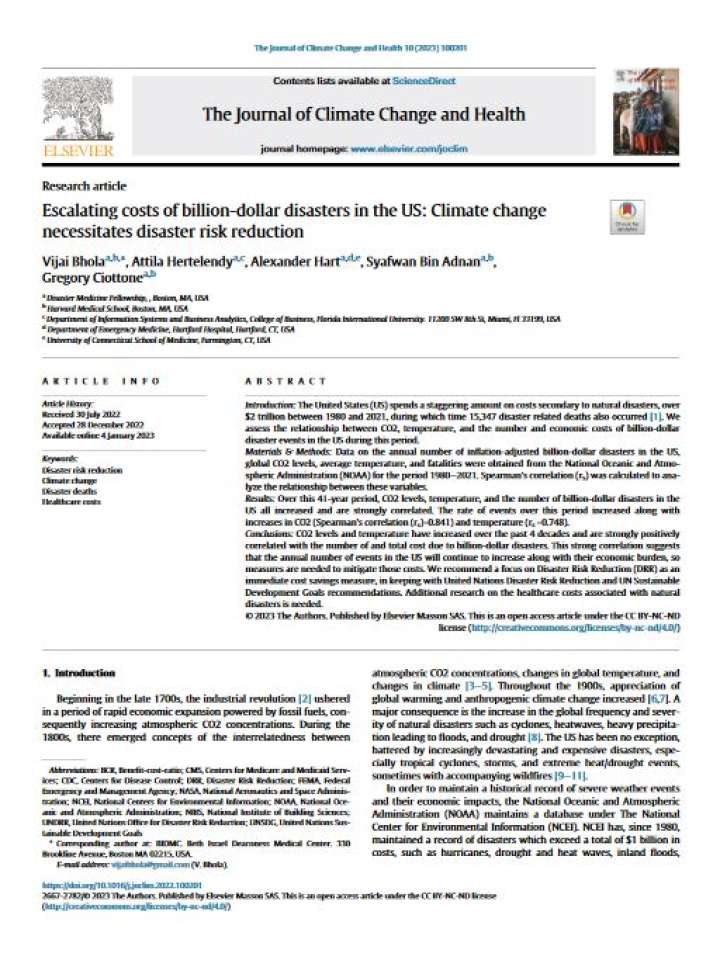Escalating costs of billion-dollar disasters in the US: Climate change necessitates disaster risk reduction
This study reports strong and increasing correlations between temperature and CO2 levels, and with the economic cost of disasters in the US. According to the authors, the strength of the correlations seem to be increasing with increases in temperature and CO2 levels over time. They highlight that the economic impact of disasters in the US is staggering, tallying over $2.1 trillion over the last 42 years.
Data on the annual number of inflation-adjusted billion-dollar disasters in the US, global CO2 levels, average temperature, and fatalities were obtained from the National Oceanic and Atmospheric Administration (NOAA) for the period 1980–2021. Spearman's correlation (rs) was calculated to analyze the relationship between these variables.
The researchers recommend a focus on Disaster Risk Reduction (DRR) as an immediate cost savings measure, in keeping with United Nations Disaster Risk Reduction and UN Sustainable Development Goals recommendations. Additional research on the healthcare costs associated with natural disasters is needed.
Explore further
